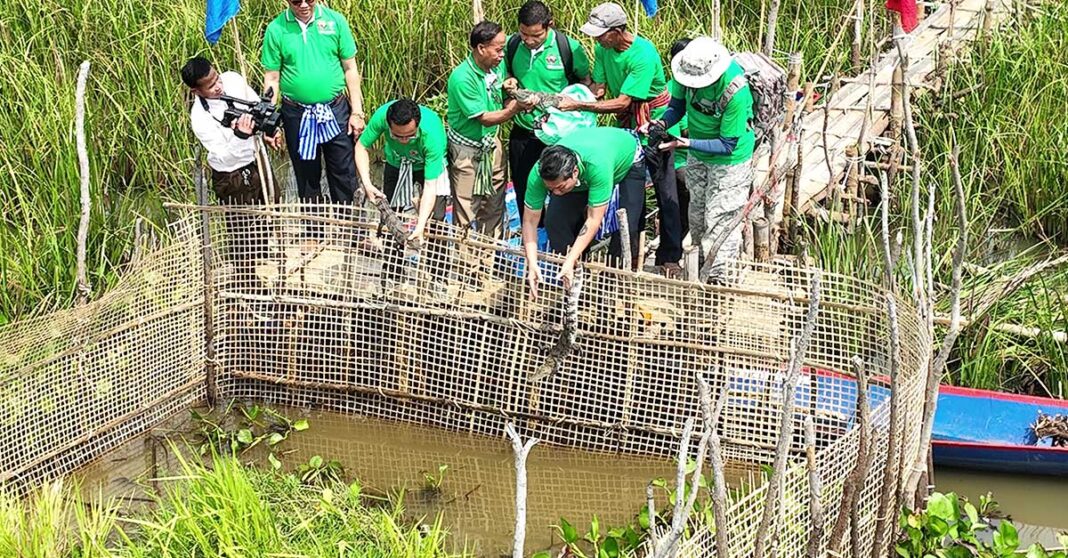To help boost the population of the critically endangered species, the Wildlife Conservation Society (WCS) has released young Siamese crocodiles into the Xe Champhone Wetlands in Savannakhet.
Last week, a group of 31 juvenile Siamese crocodiles was released into the Xe Champhone Wetlands in Tansoum village, Savannakhet, bringing the total population of released crocodiles to 143. The wetland was designated as a Ramsar Convention site in 2010.
The Siamese crocodile, a species found throughout Southeast Asia, has experienced a significant population decline over the past century, with less than 1,000 adults remaining in the wild. Hunting and habitat loss have played a major role in the dwindling numbers of this species.
Due to their potential size of up to 10 feet, the International Union for Conservation of Nature (IUCN) has classified the Siamese crocodile as critically endangered.
“The release of these 31 Siamese crocodiles will help secure the population of this
critically endangered species and demonstrates a strong commitment to the conservation of the Xe Champhone Wetlands by local communities in Laos,” said Sam Leslie, Savannakhet Landscape Director, WCS Lao PDR.
Local communities and the Wildlife Conservation Society (WCS) managed the facilities where the two-and-a-half-year-old crocodiles, ranging between 70-100 cm in length, were raised to protect the endangered reptiles and their habitat. The site also helps protect crocodiles from natural predators and reduces the risk of entrapment in gill nets and fish traps.
“As the risk of extinction for crocodiles increases, this crocodile project plays an important
role in restoring the wetland ecosystem in Xe Champhone. The release of these crocodiles is the culmination of several years of conservation action implemented by the joint project
between joint provincial authorities and the ministry,” said Associate. Prof. Dr. Somvang Phimmavong, Deputy Director General of the Department of Forestry, Ministry of Agriculture & Forestry.
In 2022, about 47 juvenile crocodiles were released into the wetland, and in the same year, crocodile eggs were discovered from a rare and endangered crocodile mother in the region.



